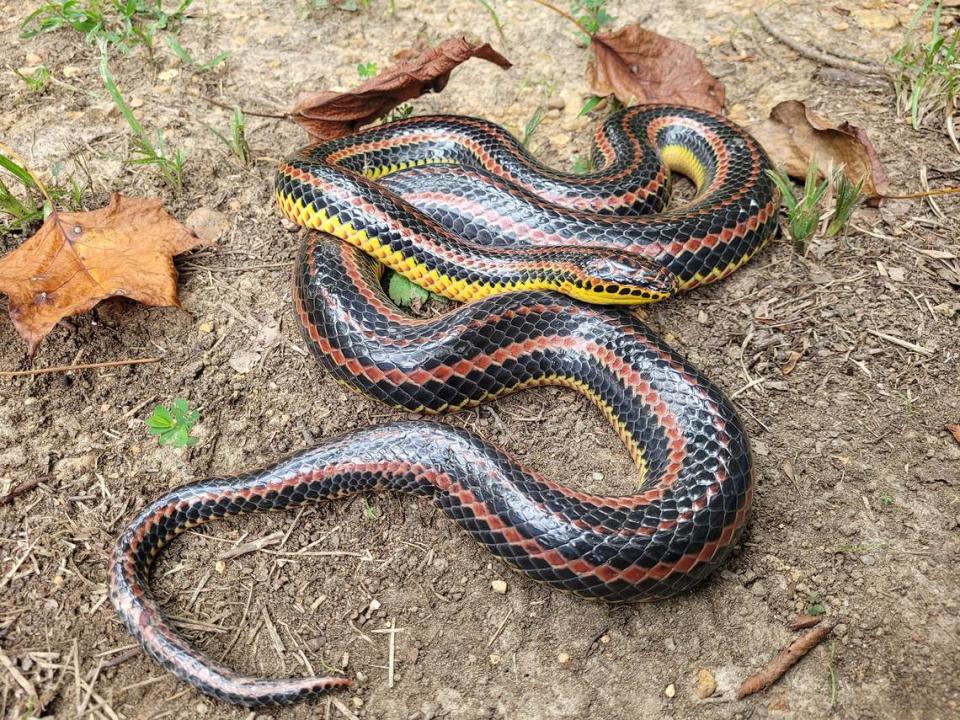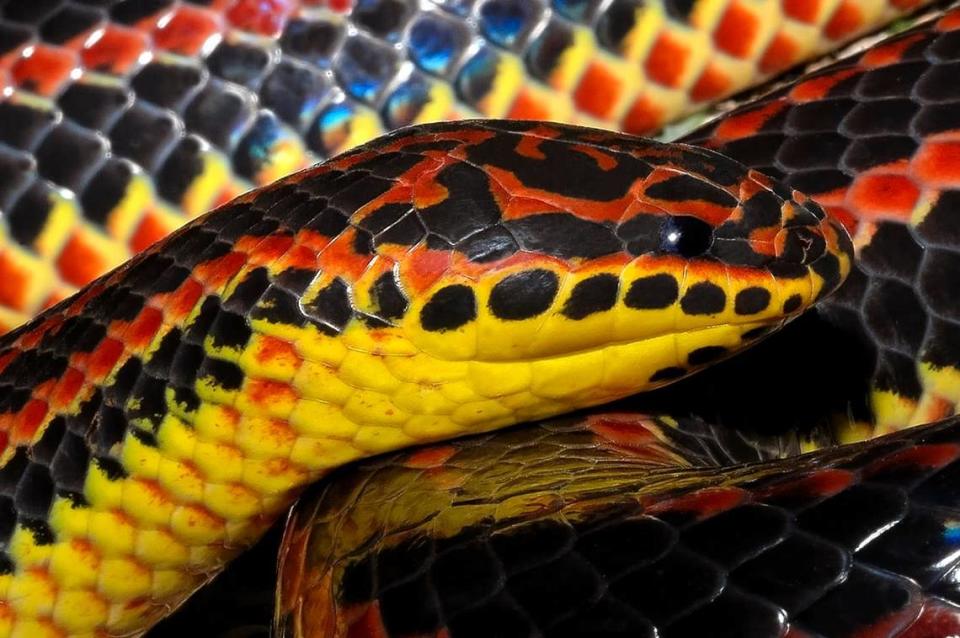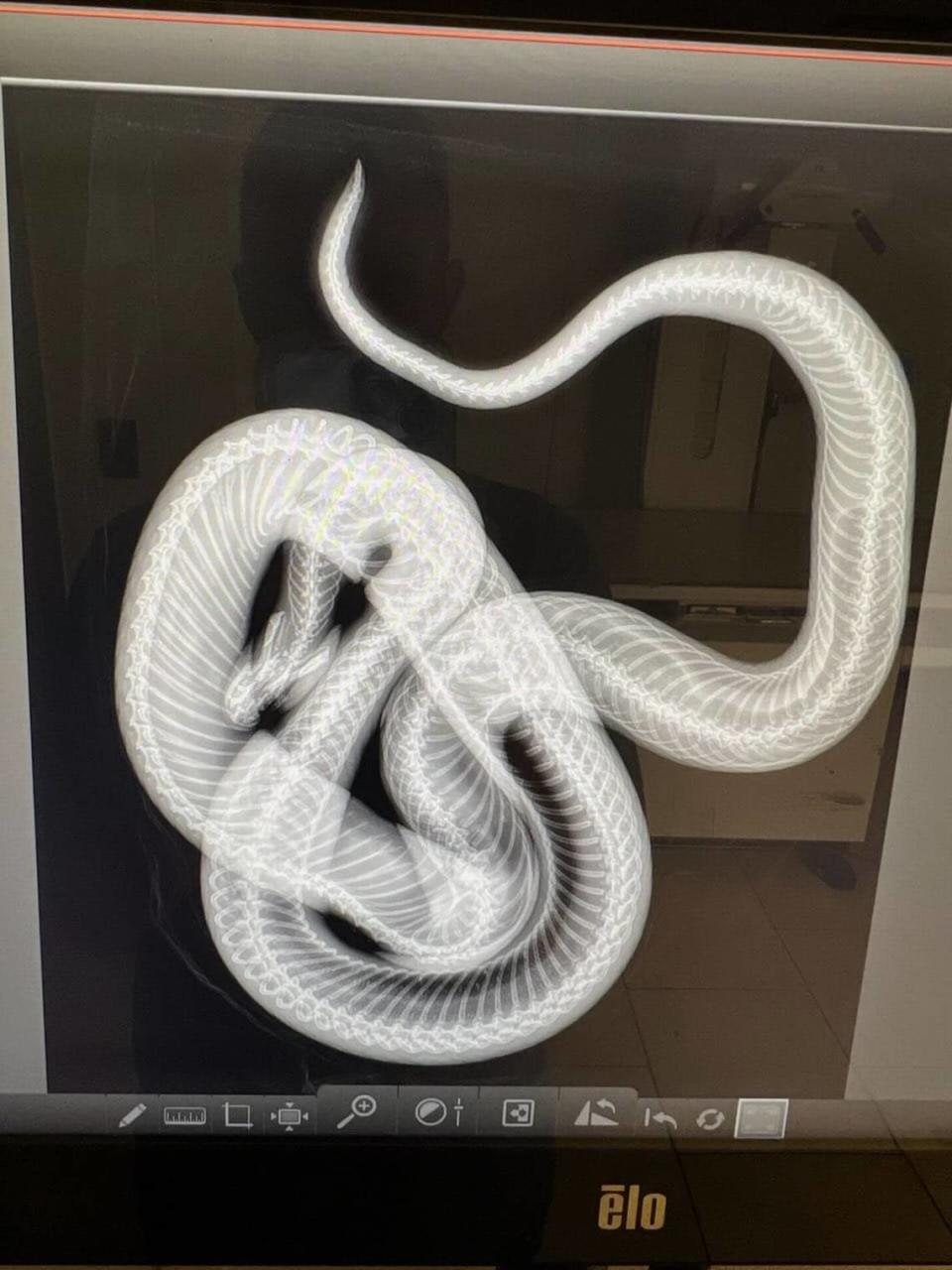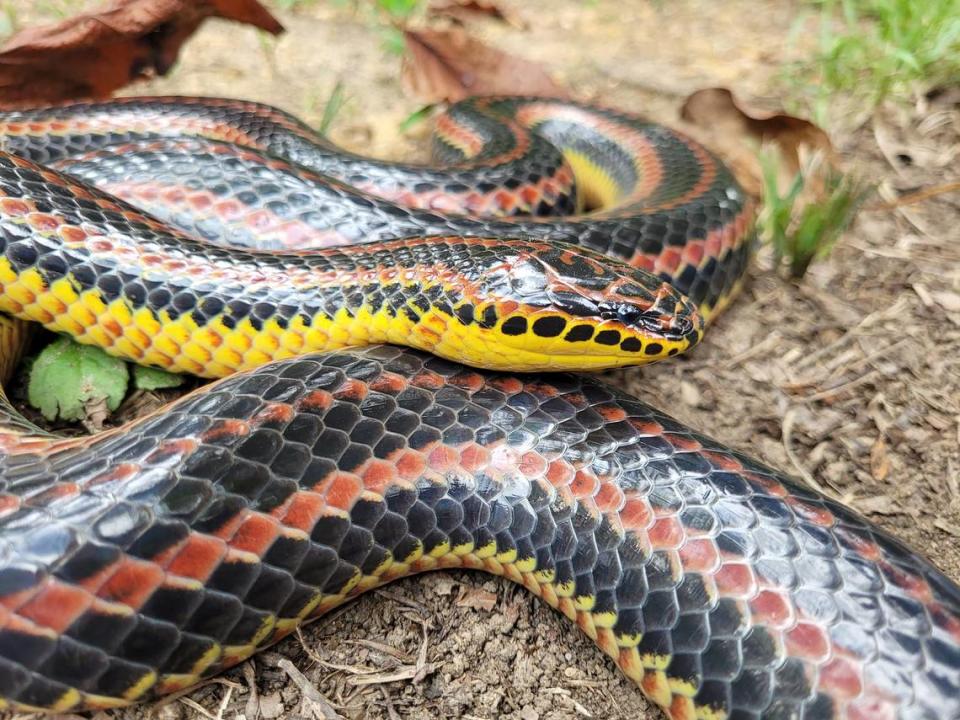Rainbow snakes are rarely seen in Mississippi. One was just rescued from a Coast party.
A Rainbow snake recently crashed a party in South Mississippi. And while most guests wanted to kill the water-dwelling loner, one man took it upon himself to save its life.
When photos of the two new besties were posted on social media, they quickly came to the attention of a retired Mississippi Wildlife, Fisheries and Parks (MDWFP) biologist.
As it turns out, Rainbow snakes are a protected species in Mississippi, according to local herpetologist Terry Vandeventer. The social media posts of the captured snake could have resulted in a fine.
“We have four snakes in Mississippi that, back in the early ‘70s, were deemed endangered and protected by Mississippi Wildlife, Fisheries and Parks: The Eastern Indigo snake, Southern Hognose snake, Rainbow snake and Black Pine snake,” Vandeventer said. “All snakes in Mississippi are protected at some level.”
It is illegal to catch and sell Mississippi’s 56 species of snakes. Picking up or disturbing the snakes is also strongly discouraged. In most cases, Vandeventer said touching the snakes requires a license. It is even illegal to kill a venomous snake unless you are in imminent danger.
The last Mississippi sighting of a Black Pine was in the 1960s. Eastern Indigo snakes have not been seen in the state since 1939, Vandeventer said. Each species has made it onto the federal list of endangered species.
If spotted, the best way to protect an endangered species is to leave it alone. Document the sighting and contact MDWFP, but do not attempt to capture or disturb the snake unless it is found in the middle of the road or otherwise in danger.
Despite its status, Vandeventer said Rainbow snakes are not endangered and far from rare. “They’re not rare, but rarely seen.”

A Georgia colleague of Vandeventer could count the times he had seen a Rainbow snake in the wild on one hand. When he set up a catch-and-release trap, hundreds were caught.
Vandeventer said Rainbow snakes are experts at hiding. They dwell in moving water, lurking in the shadows until they spot their one source of food, the American eel. The most likely time to catch a glimpse of the elusive species is when they venture out after rain storms or are feeding on prey along lakes and riverbeds.
If you are not an American eel, you will never be in imminent danger of a nonvenomous Rainbow snake.
“They never bite. They do not bite under any circumstance,” Vandeventer said. “If you hold them, they will wiggle around and they’ll poke you with their tails to get you to let them go.”
Though parted from its new friend and savior, the rescued Rainbow snake did have a happy ending. The 62-inch snake was taken into custody, examined and given a clean bill of health before being returned to its natural habitat.




